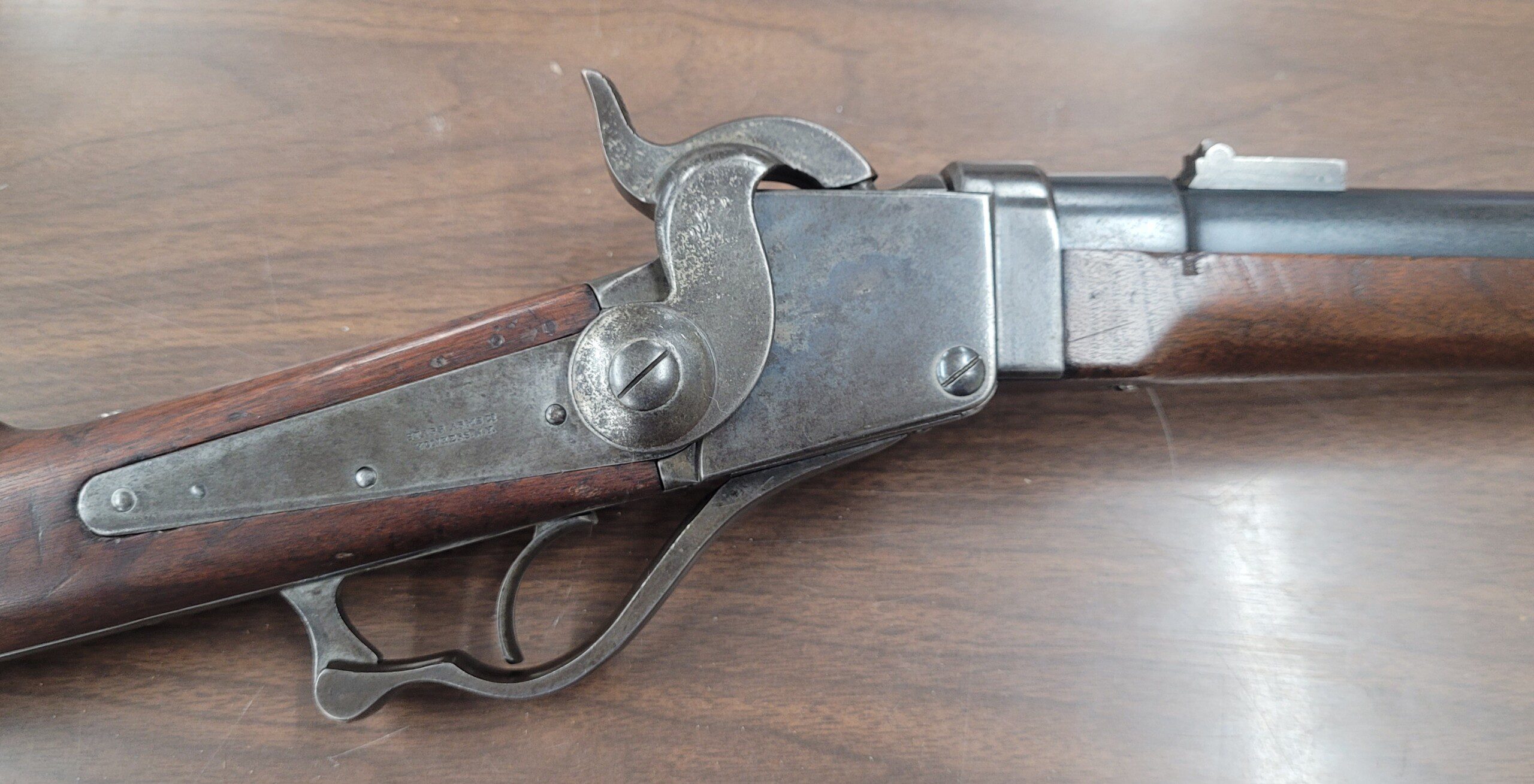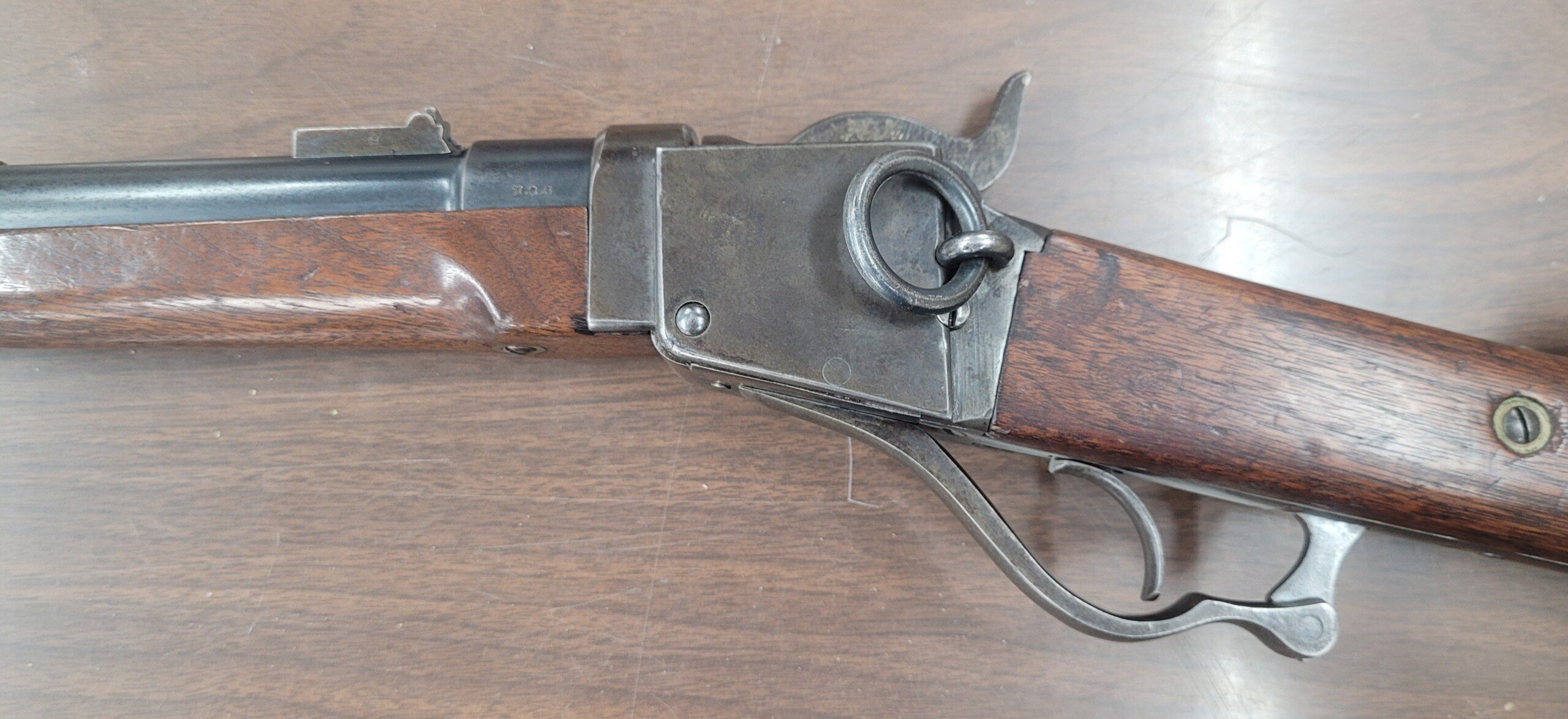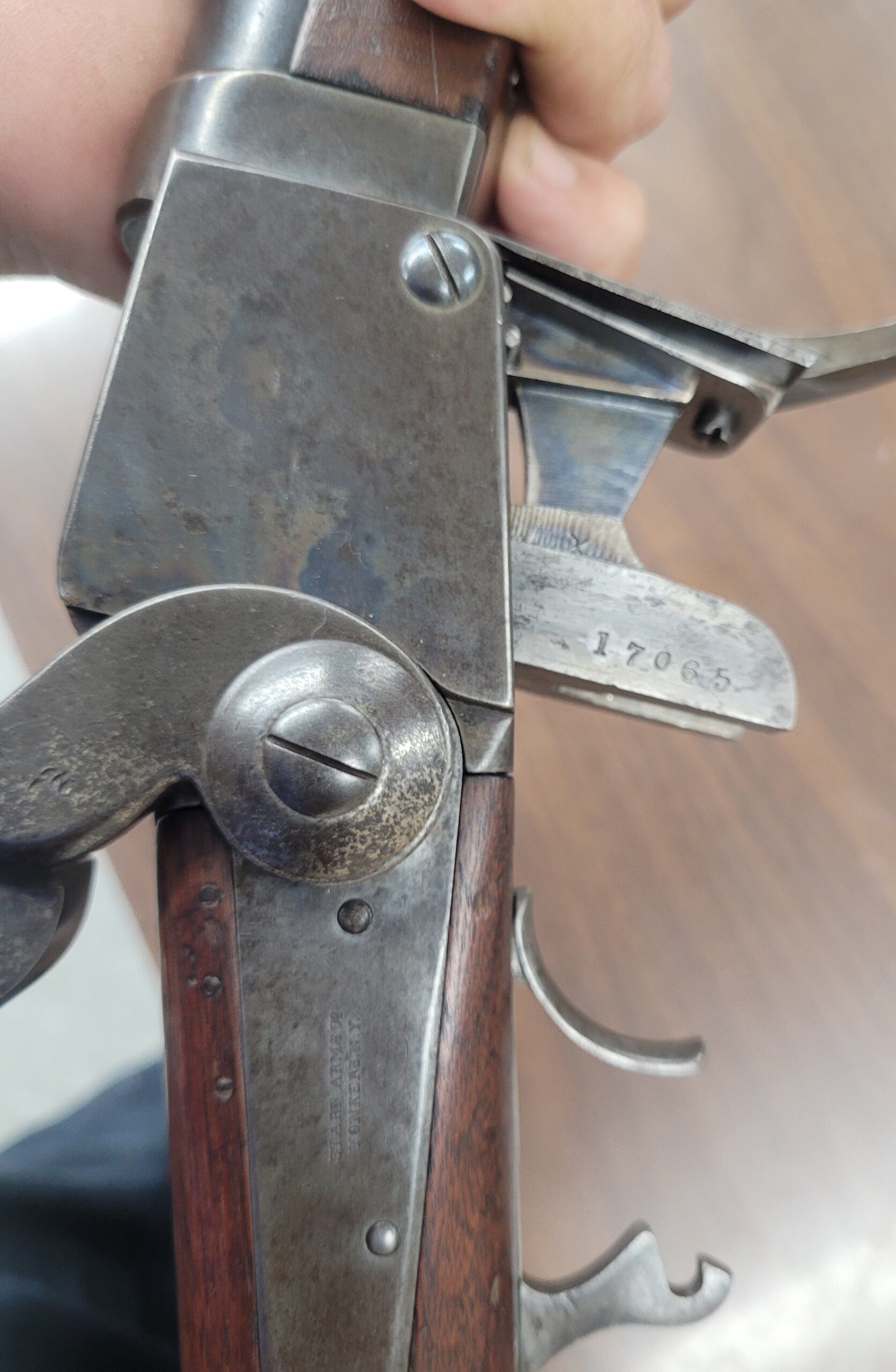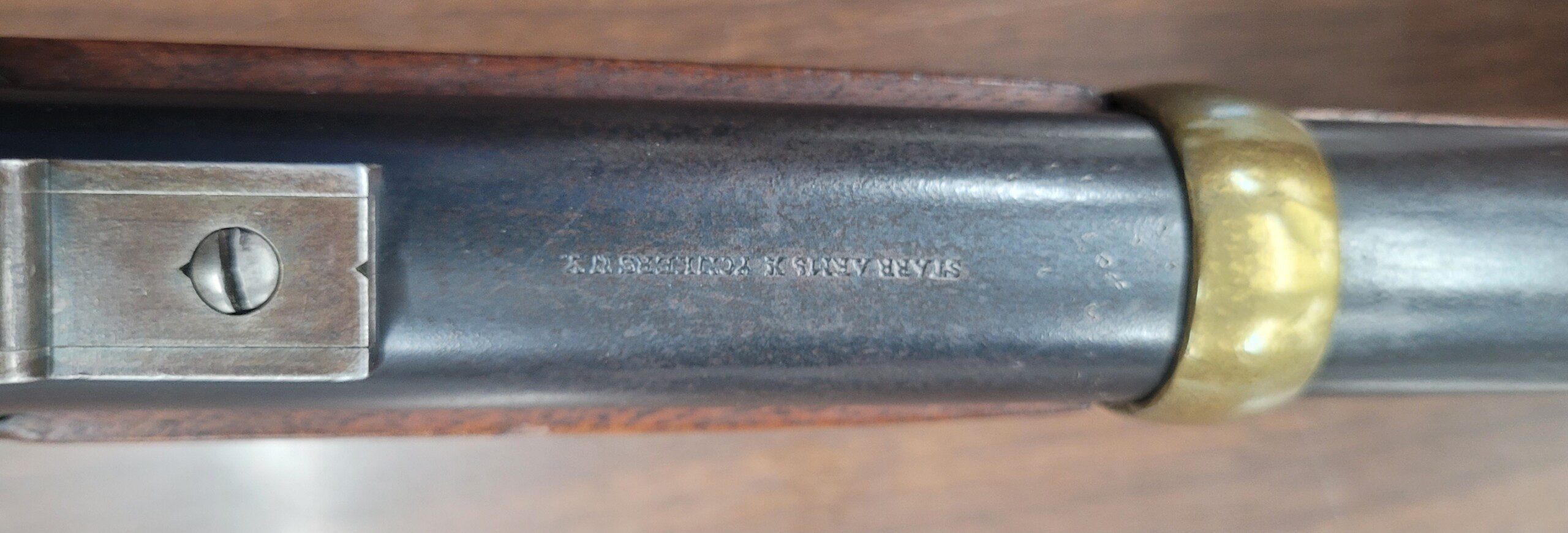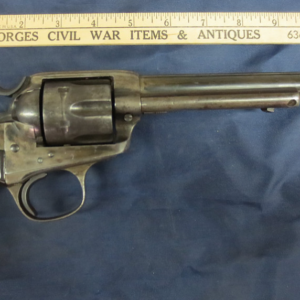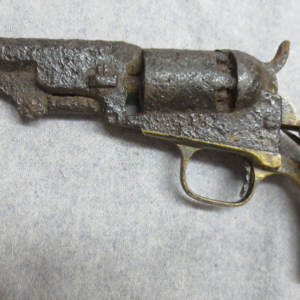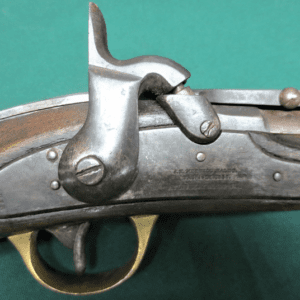Description
This is a stellar example of the Starr carbine as issued to Union cavalry troops during the Civil War. On a scale of one to ten, it is a 9+ firearm with ease! The weapon retains brilliant blue and vivid case colors and the action and bore are as NEW! If you want a super nice one, look no more.
Between 1861 and 1864 over 20,000 percussion model carbines were produced by the Starr Arms Company. The firearm is a .54 caliber single shot with a barrel length of 21 inches and overall 37.65 inches long. The barrel with approx. 98% of the original blue finish remains. “STARR ARMS MFG. YONKERS NY” stamping very strong. Inspector’s initials “H.G.S.” on side of barrel. Rifling strong and bright. The serial number “17065” is present on the side of the breech block. Strong bluing remains on lever and tang. Receiver has nice case color tone and the hammer retains strong case colors. “STARR ARMS CO / YONKERS, NY” is well struck and visibly strong. The oiled walnut forestock has very minor dings and retains sharp edges overall. The stock has two nice cartouches, with typical very light and minimal dings and with no cracks. The inspector stamp near the buttplate is “S.T.B.” It has an aged mellow brass buttplate and is mechanically perfect with all parts original. This is a choice carbine that is becoming difficult to find.
By Springfield Research database sources, this weapon was likely originally issued to the 20th New York Cavalry in 1863. On June 19, 1863, Col. Newton B. Lord received authority to recruit this regiment, which received its numerical designation October 8, 1863, and was organized at Sackett’s Harbor, where its companies were mustered in the service of the United States for three years.
The companies were recruited principally; A at Sackett’s Harbor, Champion, Denmark, Pinckney and Wilna; B at Sackett’s Harbor, Brownville, Clayton, Dexter, Lyme, Philadelphia, Orwell and Watertown; C at Antwerp, Alexandria, LeRay, Theresa and Watertown; D at Cape Vincent, Clayton, Ellisburg, Mannsville, LaFargeville, Sackett’s Harbor and Watertown; E at Champion, Diana, Croghan and Wilna; F at Copenhagen, Redwood and Syracuse; G at Albany, Cape Vincent, Evan’s Mills, Rome, Syracuse and Watertown; H at Antwerp, DeKalb, Edwards, Fowler and Gouverneur; I at Cape Vincent, Oswego, Rome, Sackett’s Harbor, Syracuse and in St. Lawrence county; K at Albany, Sandy Creek, Sackett’s Harbor, Wilna and Watertown; L at Norwich, Oswego, Penn Yan, Sackett’s Harbor and Syracuse; and M at Sackett’s Harbor, Albany, Herkimer, Norwich, Mannsville, Oswego, Rome, Theresa and Watertown.
The regiment left the State September 30, 1863, and served in the 22d Corps from October, 1863, Company F at Portsmouth, Va., from October, 1863; all at Portsmouth, Va., in the Department of Virginia from November, 1863; in Heckman’s Division, 18th Corps, from January, 1864; in the defenses of Portsmouth, Va., in the district of East Virginia, Department of Virginia and North Carolina, from April, 1864; in 1st Brigade, Kautz’s Division, Cavalry, Army of the James, from December 3, 1864; Company D at Fort Pocahontas, Va., in Separate Brigade, defenses of Bermuda, from January, 1865; Company F at Fort Powhattan, Va., and Company G in 1st Brigade, Mackenzie’s Division of Cavalry from March, 1865; Company I with the Provisional and 10th Corps in March, 1865.
The regiment was honorably discharged and mustered out under the command of Col. David M. Evans July 31, 1865, Companies E and H at Fort Monroe, the other companies at Manchester, Virginia. During its service it lost by death, killed in action, 6 enlisted men; of wounds received in action, 1 enlisted man; of disease and other causes, 2 officers, 121 enlisted men; total, 2 officers, 128 enlisted men; aggregate, 130; of whom 15 enlisted men died in the hands of the enemy.
